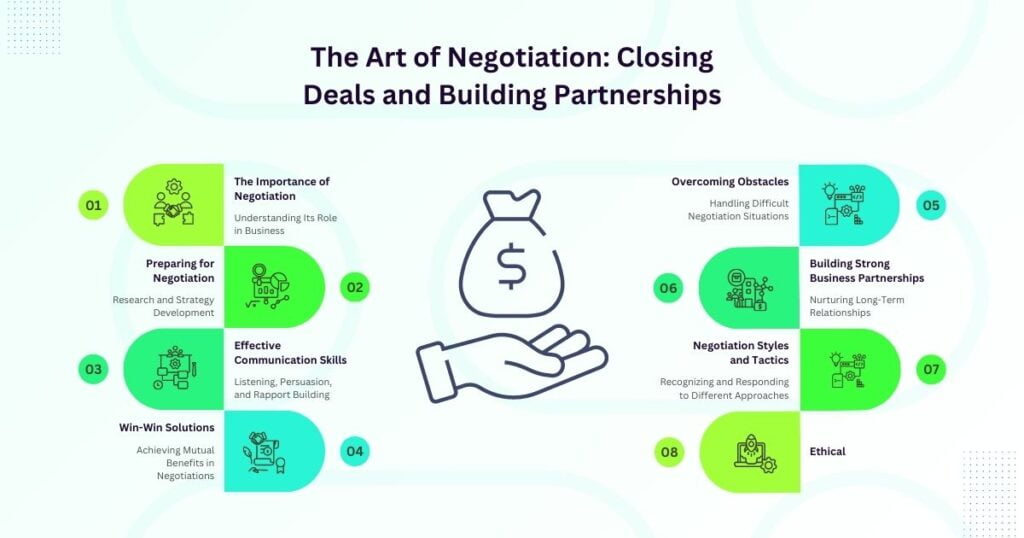Virtual Assistant Rate Raise Negotiation Strategy – Expert Tips
In this video, Virtual Assistant Rate Raise expert Erin Booth shares her favorite rate raise negotiation strategy for negotiating a rate raise when your client says no. She understands that it can be discouraging when a client doesn’t agree to your desired rate, but she assures you that there is a solution. Erin suggests using the incremental increase pricing strategy, where you propose a one dollar increase per month over the next five months. This approach allows your client to adjust their budget and gradually increase your rate without feeling overwhelmed. By implementing this simple strategy, you can ensure that you are getting the compensation you deserve without scaring away your clients. If you are looking for more tips on Virtual Assistant Rate Raise, rates and negotiation, be sure to leave a comment on Erin’s video and let her know your concerns. She is more than happy to help you with any income-related questions.
How to negotiate a rate raise when your client says NO

Introduction to the topic
Negotiating a rate raise can be a sensitive and challenging task, especially when your client initially says no. However, it is crucial to advocate for your worth and ensure that your compensation reflects the value you bring to the table. In this article, we will explore various strategies and approaches to help you navigate through the negotiation process when faced with client hesitation.
Understanding the client’s hesitation
Before diving into the negotiation, it is essential to understand why your client might be hesitant to grant your rate raise request. Assessing their financial situation is a crucial first step. Consider factors such as their budget constraints, cash flow issues, or any other financial challenges they might be facing. By gaining this knowledge, you can approach the negotiation with empathy and develop a tailored proposal that addresses their concerns.
Identifying your client’s specific concerns is essential in addressing their hesitations. Are they worried about the impact on their budget, the value of your services, or other external factors? By understanding their perspective, you can acknowledge their concerns and tailor your approach to alleviating them. Remember, empathy is key in fostering open and productive communication throughout the negotiation process.
Proposing an incremental increase
When faced with client hesitation, proposing an incremental increase can be an effective strategy. Instead of seeking a significant jump in your rate, suggesting a gradual raise over time might seem more manageable and less overwhelming to your client.
To implement this approach, explain the concept of an incremental increase to your client. Outline how it allows them to adjust their budget accordingly and demonstrates your willingness to work with them in a way that benefits both parties. Determine the exact increment amount and calculate the time period for the increase based on your client’s needs and financial situation.
Explaining the benefits
In any negotiation, it is crucial to emphasize the value of the services you provide. When proposing a rate raise, clearly articulate the tangible benefits your client receives by investing in your expertise. Highlight any improvements or added benefits they have experienced since working with you. By showcasing these positive outcomes, you can strengthen your case for a higher rate.
Additionally, tailor your explanation of the benefits to address your client’s specific needs. If they have voiced concerns or challenges in the past, explain how your increased rate can help address those issues directly. By aligning your rate increase proposal with their specific pain points, you can illustrate how it will ultimately contribute to their success.

Setting a timeline
To approach the rate raise negotiation effectively, it is crucial to establish a clear timeline for the increase. Work with your client to agree on a start date and determine the intervals at which the raise will occur. By solidifying these details ahead of time, you eliminate ambiguity and ensure both parties are on the same page.
Moreover, outline the total increase over time for your client. By presenting a comprehensive timeline, you provide them with a clear picture of the financial commitment they will be making. This transparency fosters a sense of trust and understanding, making it more likely for your client to be receptive to the proposal.
Considering alternative income sources
When trying to negotiate a rate raise, it’s important to consider alternative income sources that might benefit your client and ease their financial burden. Explore options that can assist them in managing the increase, such as suggesting potential cost-saving measures. This could include automating certain processes, streamlining operations, or implementing more efficient workflows.
Additionally, discuss potential revenue-generating opportunities that your client can explore to offset the increased expense. Brainstorm together and identify new avenues for growth, such as expanding their market reach, launching new products or services, or targeting a different customer segment. By investing time and effort into these alternative income sources, your client may become more receptive to the rate raise.

Communicating with the client
Effective communication is at the core of successful negotiation. When requesting a rate raise, schedule a meeting or call with your client to discuss the matter in person. This personal touch allows for a deeper connection and a more nuanced discussion. Be sure to choose a mutually convenient time to ensure both parties can participate actively and focus on the conversation.
Prepare a persuasive argument to present during the meeting. Clearly outline your reasons for requesting the rate raise, including your increased expertise, the value you bring to the client, and any additional responsibilities you have taken on. Use concrete examples and data whenever possible to bolster your case. Present the proposal professionally, highlighting the potential benefits for their business as well.
Addressing client concerns
During the negotiation, listen carefully to your client’s objections and concerns. Give them space to express their worries and ensure you actively listen to their perspective. By genuinely understanding their concerns, you can respond empathetically and provide tailored solutions that address each issue.
When responding to client concerns, it is essential to focus on solutions rather than getting defensive. By tackling objections head-on and providing viable alternatives, you demonstrate your commitment to working collaboratively. Your ability to meet their concerns with empathy and practical solutions will build trust and increase the chances of a successful negotiation outcome.

Reassuring the client
Throughout the negotiation process, it is important to reassure your client of your dedication to their success. Emphasize your commitment to providing high-quality services and delivering exceptional results. Demonstrate your willingness to work with them closely and address any concerns that may arise in the future. By reinforcing your value and reliability, you can alleviate any lingering doubts they may have about approving the rate raise.
Monitoring progress
After successfully negotiating a rate raise, it is crucial to monitor the progress regularly. Check in with your client to ensure they are satisfied with the increased rate and the benefits they are receiving. Make sure that your client’s expectations are being met and that they are seeing the value they anticipated. Regular communication and feedback will strengthen the client relationship and set the foundation for future rate negotiations.

Conclusion
Negotiating a rate raise when your client initially says no can be a challenging endeavor. However, by understanding the reasons behind their hesitation and approaching the negotiation strategically, you can increase the likelihood of a successful outcome. Remember to emphasize the value of your services, propose an incremental increase, address client concerns, and communicate effectively throughout the process. With persistence and flexibility, you can navigate the delicate negotiation process and secure the rate raise you deserve.
FAQ: Virtual Assistant Rate Raise Negotiation Strategy
FAQ for Virtual Assistant Rate Raise Negotiation Strategy
Virtual Assistant Rate Raise Negotiation Strategy
How do virtual assistants raise rates?
Virtual assistants can raise their rates by communicating the value they bring to their clients, highlighting any new skills or services they have added, being clear about their new rates and the date they will take effect, offering existing clients a grace period before the new rates take effect, and being prepared to negotiate if necessary.
What is a common hourly rate for a virtual assistant?
According to data compiled by virtual assistant companies, the average hourly rate for a virtual assistant in the United States is currently $22. However, virtual assistant rates can vary greatly depending on factors such as experience, skills, and services offered. Freelance virtual assistants can charge anywhere between $1 to over $100 per hour, while virtual assistants hired as employees can expect to be paid more.
Will there be a rise in virtual assistants?
It is expected that there will be a rise in virtual assistants as more businesses and individuals turn to remote work and outsourcing. The virtual assistant industry has been growing steadily over the years, and this trend is expected to continue.
Can you make 10k a month as a virtual assistant?
Yes, it is possible to make 10k a month as a virtual assistant. However, it requires strategic planning, goal-setting, and niche specialization. To achieve this, virtual assistants need to offer specialized services, raise their rates to match their specialized skills, and offer packages or charge a flat fee for projects instead of being paid hourly. To figure out a package or project rate, virtual assistants need to figure out their hourly rate and then multiply it by the amount of time it takes to do the package of services or projects.
How do I raise my rates as a virtual assistant?
Here are some tips to help you raise your rates with confidence:
- Communicate the value you bring to your clients and how your services have helped them.
- Highlight any new skills or services you have added since you last set your rates.
- Be clear about your new rates and the date they will take effect.
- Offer existing clients a grace period before the new rates take effect.
- Be prepared to negotiate if necessary.
How do I negotiate better hourly rates with clients?
Here are some tips to help you negotiate better rates with clients:
- Ensure that you are worth the raise by providing high-quality work and adding value to your clients.
- Understand the client’s negotiation nuances and be prepared to compromise.
- Don’t be afraid to ask for a raise, as it is expected in business.
- Don’t apologize for asking for a raise, but be confident and professional.
How much should I charge as a virtual assistant?
The amount you charge as a virtual assistant depends on several factors, including your experience, skills, and the services you offer. Here are some tips to help you set your rates:
- Research the rates of other virtual assistants in your niche.
- Calculate your hourly rate based on your desired annual income and the number of billable hours you can work in a year.
- Consider offering package rates for specific services.
- Don’t charge too low, as this may not attract enough attention, but don’t charge too high, as this may turn away potential clients.
How can a virtual assistant company help with rate negotiation?
A virtual assistant company can help simplify the onboarding process and provide a dedicated VA who has already been screened and trained. However, the negotiation of rates would still be up to the individual VA and the client.
How can I manage my virtual assistant effectively?
Here are some tips to help you manage your virtual assistant effectively:
- Set clear communication channels to avoid breakdowns.
- Maximize technology and use a dedicated instant messaging program to communicate with your VA.
- Set clear expectations and deadlines for tasks.
- Provide feedback and recognition for good work.
- Be open to constructive feedback and suggestions from your VA.



